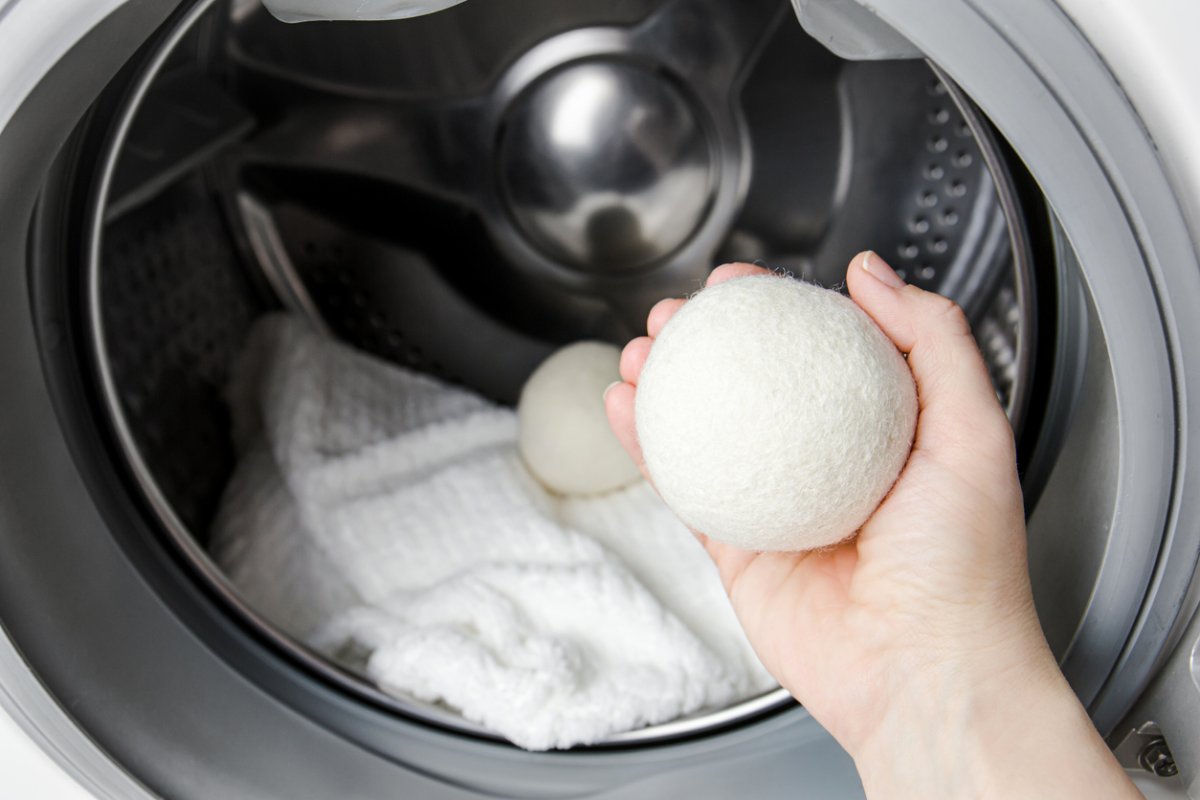We may earn revenue from the products available on this page and participate in affiliate programs. Learn More ›
Q: I’ve heard about dryer balls, but I don’t know how they work or if they’re effective. What do dryer balls do, and can they really make a difference in my laundry routine?
A: Dryer balls serve multiple purposes in the drying process but are mainly designed to improve airflow inside the dryer. They physically separate pieces of laundry as they tumble dry, allowing hot air to circulate more efficiently. This reduces the overall drying time and energy consumption per dryer load.
Karina Toner, operations manager for Arlington, Virginia-based Spekless Cleaning, says, “Dryer balls offer an eco-friendly alternative to traditional dryer sheets. Their reusable nature reduces waste and lessens the environmental impact of laundry routines.” She adds, “Not only do they offer an eco-friendly alternative to traditional dryer sheets by being reusable, but they also significantly cut down on waste and chemical exposure, making them a healthier choice for your household.”

Dryer balls improve airflow inside of your dryer as they bounce around.
Per Toner, “Dryer balls excel in reducing drying time due to their ability to create space between clothes. This separation facilitates better air circulation, leading to faster drying and potential energy savings.” This helps clothes dry faster and more evenly, making it less likely that large items like sheets and towels will have damp spots at the end of the cycle. According to the David Suzuki Foundation, dryer balls can actually reduce drying time by 30 to 50 percent, depending on the make and model of your dryer.
Like dryer sheets, dryer balls protect against wrinkles, act as a fabric softener, and reduce static cling.
Along with reducing drying time, the improved airflow provided by dryer balls also reduces static cling. Toner adds, “A key benefit of dryer balls is their natural fabric softening effect. As the balls tumble with the laundry, they gently massage the fibers, reducing stiffness and resulting in softer, more comfortable fabrics.”
Another key benefit of dryer balls is the fact that they fight wrinkles. As Toner explains, “By keeping clothes in motion, dryer balls help minimize wrinkles. This feature is particularly beneficial for delicate fabrics prone to wrinkling, potentially reducing the need for ironing. The gentle tumbling action of dryer balls can also help preserve the shape and longevity of clothing.”
Unlike dryer sheets, reusable dryer balls don’t use harmful chemicals but are equally effective alternatives. This makes them ideal for families with sensitive skin and households looking to reduce their environmental footprint.
Dryer balls can be made from natural or synthetic materials.
Dryer balls can be made from a variety of materials, but the most common types are wool and plastic. Wool laundry balls are made from natural sheep’s wool and are biodegradable, offering a more eco-friendly solution. They’re particularly effective in softening fabrics and can last for several years before they need to be replaced. Plastic dryer balls are typically designed with spikes to help fluff up clothes and reduce static. While both types effectively reduce drying times, the benefits of wool dryer balls are that they’re natural and sustainable.

How to Use Dryer Balls
Using dryer balls is simple: Just toss them into the dryer with your wet laundry. Dryer balls come in varying sizes, so you usually need between three and six per load—fewer for smaller loads or larger balls or more for larger loads or smaller balls. As is always the case, avoid overloading the dryer for the best results.
Despite their overall net benefit to your laundry room repertoire and routine, beware of using dryer balls with some loads of delicates. As Toner explains, “Dryer balls are generally effective with most fabrics, but caution should be exercised with very delicate items.” Otherwise, you’re good to go with your sustainable alternative to dryer sheets.


